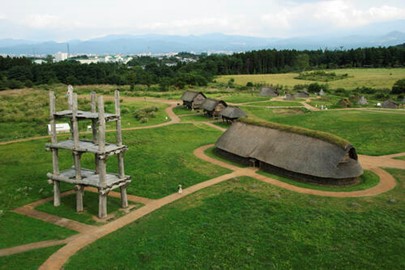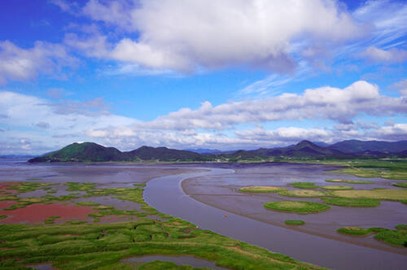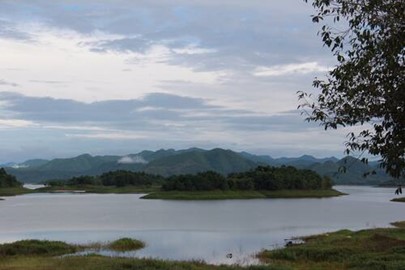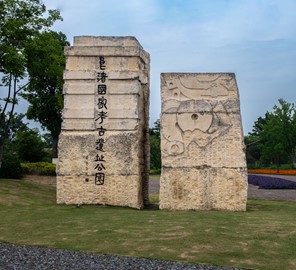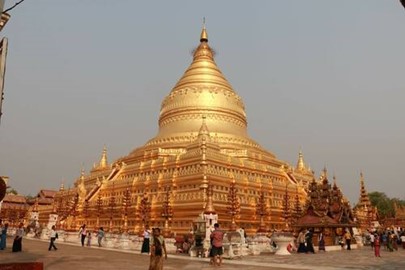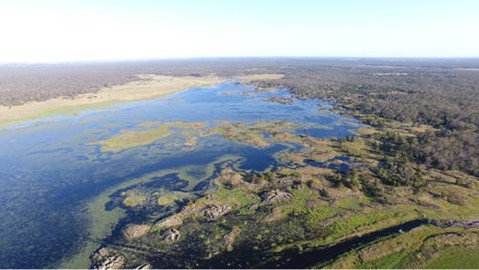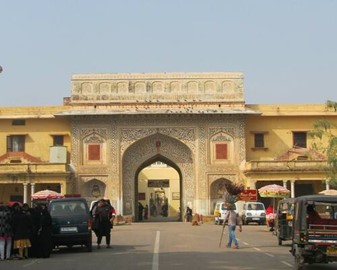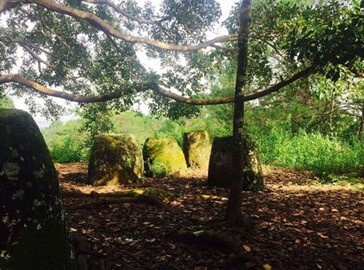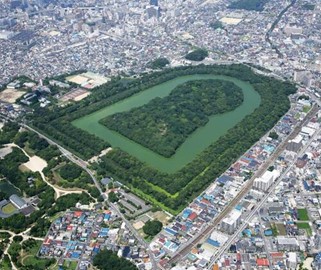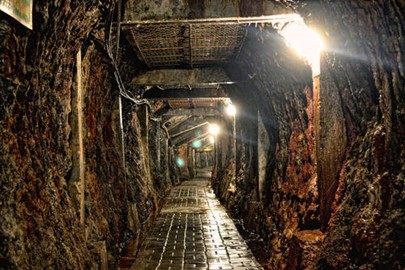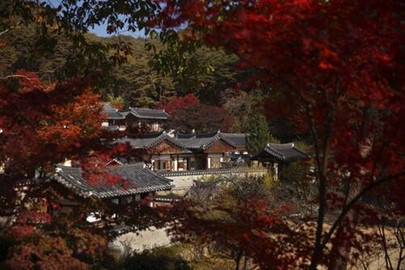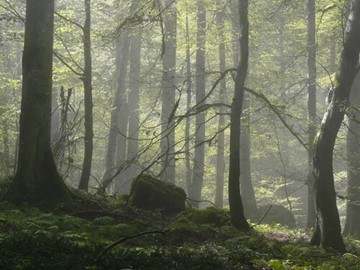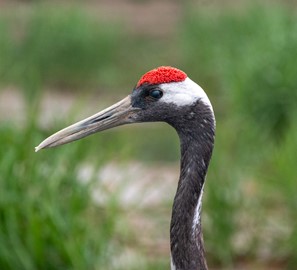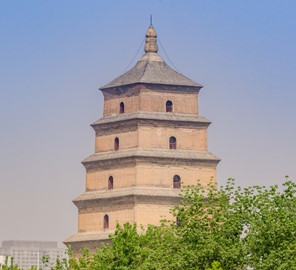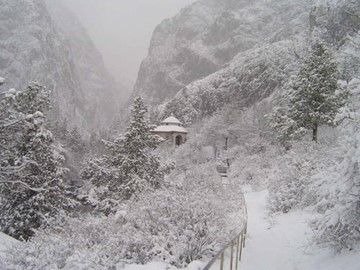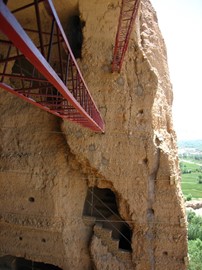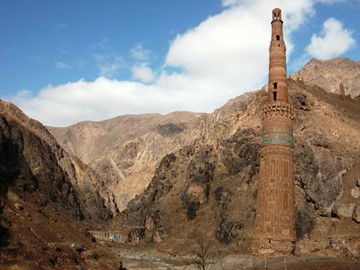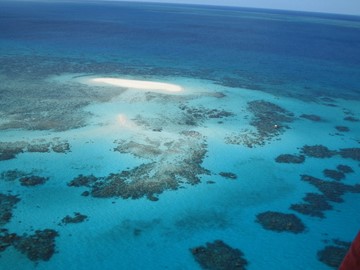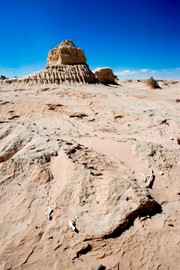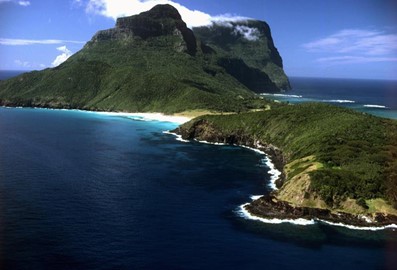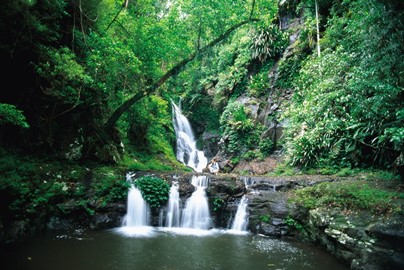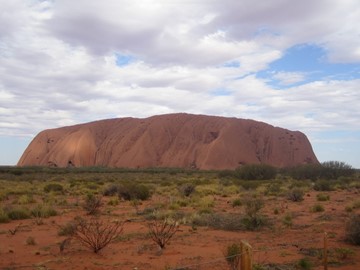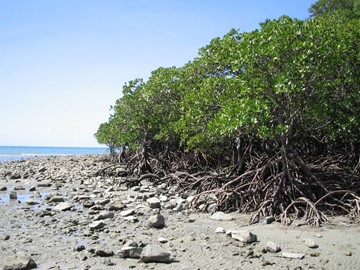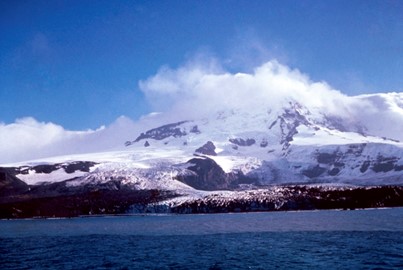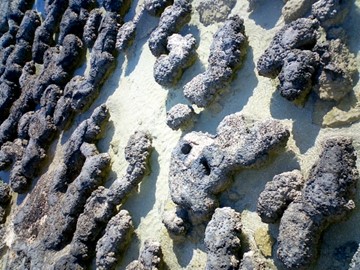region :: asia and the pacific
Jomon Prehistoric Sites
The Jomon Prehistoric Sites, a UNESCO World Heritage site in Japan, recognized in 2021, are 17 archaeological locations in northern Japan showcasing the Jomon culture, a hunter-gatherer society from 13,000 to 300 BCE. Featuring settlements, burial sites, and ritual mounds like Sannai-Maruyama, these sites reveal advanced pottery, early sedentism, and spiritual practices unique to the Jomon period. Spanning millennia, they offer a rare window into Japan’s pre-agrarian past, highlighting a sophisticated lifes... Read More
Getbol, Korean Tidal Flats
Getbol, Korean Tidal Flats, a UNESCO World Heritage site in South Korea, recognized in 2021, are expansive coastal wetlands along the Yellow Sea, celebrated for their ecological richness and geological significance. Formed by tidal cycles, these mudflats in Seocheon, Gochang, Shinan, and Boseong host diverse species like migratory birds and rare benthic organisms, thriving in a dynamic intertidal zone. A vital stopover on the East Asian-Australasian Flyway, they highlight Korea’s natural heritage and the in... Read More
Kaeng Krachan Forest
Kaeng Krachan Forest, a UNESCO World Heritage site in Thailand, recognized in 2021, is a pristine tropical forest along the Tenasserim Range, celebrated for its rich biodiversity and rugged terrain. Home to rare species like the Siamese crocodile, clouded leopard, and over 400 bird species, it thrives in a moist evergreen ecosystem shaped by steep slopes and rivers. Bordering Myanmar, this ecological sanctuary reflects Thailand’s natural heritage, offering a vital refuge for wildlife and a testament to Sout... Read More
Liangzhu
The Archaeological Ruins of Liangzhu City, a UNESCO World Heritage site in China, recognized in 2019, are a 5,300-year-old urban settlement in Zhejiang Province, showcasing the Neolithic Liangzhu culture (3300-2300 BCE). Featuring a sophisticated city layout with moats, walls, a palace, and intricate jade artifacts, it reflects early state formation and advanced hydraulic engineering in East Asia. This well-preserved site offers a rare glimpse into China’s ancient urban civilization, highlighting its cultur... Read More
Bagan
Bagan, a UNESCO World Heritage site in Myanmar, recognized in 2019, is an ancient city along the Irrawaddy River, famed as the capital of the Pagan Kingdom from the 9th to 13th centuries. Its vast plain features over 3,500 Buddhist temples, pagodas, and monasteries, showcasing intricate brick architecture and religious art from a golden era of Burmese culture. This sacred landscape reflects Myanmar’s historical devotion and architectural prowess, offering a stunning testament to a once-thriving medieval civ... Read More
Budj Bim
Budj Bim, a UNESCO World Heritage site in Australia, recognized in 2019, is a cultural landscape showcasing one of the world’s oldest aquaculture systems, developed by the Gunditjmara people over 6,600 years ago. Featuring stone channels, weirs, and traps built along ancient lava flows, it enabled sustainable eel harvesting and supported permanent settlements with circular stone huts. The first Australian site listed solely for its Aboriginal cultural significance, Budj Bim reflects the Gunditjmara’s ingenu... Read More
Jaipur
Jaipur City, Rajasthan, a UNESCO World Heritage site in India, recognized in 2019, is an 18th-century planned city founded by Maharaja Sawai Jai Singh II, famed as the 'Pink City' for its rose-hued buildings. Its grid layout, blending Hindu and Mughal architecture, features landmarks like the Hawa Mahal and City Palace, reflecting innovative urban design and astronomical precision with the Jantar Mantar observatory. This vibrant capital showcases India’s royal heritage and cultural synthesis, embodying a un... Read More
Xiengkhuang – Plain of Jars
Xiengkhuang – Plain of Jars, a UNESCO World Heritage site in Laos, recognized in 2019, is a mysterious archaeological landscape featuring over 2,100 giant stone jars scattered across the Xiengkhuang Plateau, dating from 500 BCE to 500 CE. Likely used for funerary rituals by an Iron Age culture, these hollowed megaliths, some weighing up to 10 tons, dot hilltops and valleys amid ancient settlements. This enigmatic site reflects Laos’ prehistoric past, offering a haunting glimpse into a lost civilization’s be... Read More
Mozu Tombs
The Mozu Tombs, a UNESCO World Heritage site in Japan, recognized in 2019, are a cluster of ancient burial mounds in Osaka from the Kofun period (3rd to 7th centuries CE), including the massive Daisen Kofun, one of the world’s largest tombs. Shaped like keyholes, circles, and squares, these earthen monuments, surrounded by moats, reflect the hierarchical society and funerary traditions of early Japanese rulers. This well-preserved necropolis showcases Japan’s ancient engineering and cultural heritage, offer... Read More
Ombilin Coal Mine
The Ombilin Coal Mine, a UNESCO World Heritage site in Indonesia, recognized in 2019, is a colonial-era mining complex in West Sumatra developed by the Dutch from 1892 to extract high-quality coal. Featuring a company town, railway, and mining facilities set in a volcanic landscape, it reflects advanced industrial planning and forced labor history under colonial rule. This site showcases Indonesia’s early industrial heritage, blending European technology with local adaptation in a remote tropical region.
Seowon, Neo Confucian Academies
Seowon, Korean Neo-Confucian Academies, a UNESCO World Heritage site in South Korea, recognized in 2019, are nine historic learning centers from the Joseon Dynasty (15th to 19th centuries), exemplifying Neo-Confucian ideals. Nestled in rural landscapes, these wooden complexes, like Sosu Seowon, blend architecture with nature, featuring lecture halls, shrines, and libraries that fostered scholarship and ethics. This network reflects Korea’s intellectual heritage, showcasing a unique educational tradition tha... Read More
Hyrcanian Forests
The Hyrcanian Forests, a UNESCO World Heritage site in Iran, are ancient woodlands renowned for their rich biodiversity and unique ecosystem. Dating back millions of years, these lush, temperate forests host a variety of rare plant and animal species, some of which are endemic. The site's dramatic landscapes, with steep slopes and deep valleys, contribute to its ecological significance and natural beauty, making it a vital conservation area and a testament to Iran's natural heritage.
Migratory Bird Sanctuaries
The Migratory Bird Sanctuaries, a UNESCO World Heritage site in China, protect the world’s largest intertidal mudflat system, serving as a critical habitat for millions of migratory birds along the East Asian-Australasian Flyway. This vital ecosystem supports numerous endangered species, including the spoon-billed sandpiper and red-crowned crane, offering essential stopover points for resting and feeding during their long migrations. Recognized in two phases, with the first in 2019 and an extension in 2024,... Read More
Silk Roads Chang'an Tianshan Corridor
Silk Roads, a UNESCO World Heritage site in China, Kazakhstan, and Kyrgyzstan, recognized in 2014, is a segment of the ancient trade network linking Chang’an-Tianshan corridors, active from the 2nd century BCE to the 16th century CE. Featuring 33 sites like caravan cities, Buddhist caves, and fortifications, it reflects the exchange of goods, ideas, and cultures across deserts and mountains. This transnational site showcases Central Asia’s pivotal role in connecting East and West, preserving a legacy of his... Read More
Western Tien Shan
Western Tien-Shan, a UNESCO World Heritage site in Kazakhstan, Kyrgyzstan, and Uzbekistan, recognized in 2016, is a rugged mountain range in Central Asia, renowned for its biodiversity and dramatic landscapes. Featuring peaks, glaciers, and alpine meadows, it harbors rare species like the snow leopard and ancient fruit forests tied to Silk Road origins. This transnational site reflects the region’s natural heritage, showcasing a pristine ecological and geological treasure across borders.
Bamiyan Valley
Bamiyan Valley, a UNESCO World Heritage site in Afghanistan, recognized in 2003 and listed as World Heritage in Danger, is an ancient cultural landscape famed for its colossal Buddha statues, carved into cliffs between the 4th and 6th centuries CE, though destroyed in 2001. Nestled in a high valley, its caves, monasteries, and Silk Road relics reflect a blend of Greco-Buddhist art and medieval Islamic heritage. This site showcases Afghanistan’s rich historical tapestry, preserving a poignant legacy amid ong... Read More
Minaret of Jam
The Minaret of Jam, a UNESCO World Heritage site in Afghanistan, recognized in 2002 and listed as World Heritage in Danger, is a 12th-century brick tower standing 65 meters tall, built by the Ghurid Dynasty in a remote river valley. Adorned with intricate stucco and tile work, it reflects Islamic architectural brilliance and marks a once-thriving medieval city now lost to time. This isolated monument showcases Afghanistan’s cultural heritage, enduring despite erosion and conflict threats.
Great Barrier Reef
The Great Barrier Reef, a UNESCO World Heritage site in Australia, recognized in 1981, is the world’s largest coral reef system, stretching over 2,300 kilometers with more than 2,900 reefs and 900 islands. Home to vibrant marine life, including over 1,500 fish species and threatened species like dugongs, it reflects an unparalleled natural ecosystem. This site showcases Australia’s biodiversity heritage, offering a global marvel of ecological richness under increasing environmental pressure.
Willandra Lakes
The Willandra Lakes Region, a UNESCO World Heritage site in Australia, recognized in 1981, is an ancient lake system that dried up 18,500 years ago, preserving a remarkable record of human life from over 50,000 years ago. Featuring fossil dunes, archaeological finds like the world’s oldest ritual cremation, and extinct marsupial remains, it reflects early Aboriginal occupation and Pleistocene environmental changes. This semi-arid landscape showcases Australia’s cultural and natural heritage, offering a uniq... Read More
Lord Howe Island
Lord Howe Island, a UNESCO World Heritage site in Australia, is a pristine volcanic island renowned for its unique biodiversity and stunning natural beauty. Located in the Tasman Sea, it boasts lush forests, rugged cliffs, and crystal-clear waters teeming with marine life. Home to rare species like the flightless Lord Howe woodhen and vibrant coral reefs, the island offers a sanctuary for nature enthusiasts. Its dramatic landscapes, including the towering Mount Gower, combined with a tranquil atmosphere, ma... Read More
Gondwana Rainforests
The Gondwana Rainforests, a UNESCO World Heritage site in Australia, encompass ancient subtropical rainforests celebrated for their exceptional biodiversity and evolutionary significance. Spanning rugged landscapes, these forests harbor remnants of Gondwana, the supercontinent from millions of years ago, with unique flora like Antarctic beech and rare fauna such as the Albert’s lyrebird. Towering trees, cascading waterfalls, and volcanic terrain create a dramatic backdrop, offering a living window into Eart... Read More
Uluru
Uluru, a UNESCO World Heritage site in Australia, is an iconic sandstone monolith revered for its cultural and natural significance. Rising dramatically from the arid landscape, its striking red hue shifts with the light, captivating visitors. Sacred to the Anangu people, it holds deep spiritual importance, adorned with ancient rock art and stories of creation. Surrounded by desert flora and fauna, Uluru’s geological uniqueness and timeless beauty make it a global symbol of Australia’s Indigenous heritage a... Read More
Wet Tropics of Queensland
The Wet Tropics of Queensland, a UNESCO World Heritage site in Australia, is a lush tropical rainforest renowned for its extraordinary biodiversity and ancient origins. Teeming with unique species like the cassowary and vibrant tree frogs, it preserves some of the oldest rainforests on Earth, dating back over 100 million years. Dense canopies, cascading waterfalls, and rugged gorges create a stunning landscape, while its ecological diversity offers a living record of evolutionary processes. This pristine wi... Read More
Heard and McDonald Islands
Heard and McDonald Islands, a UNESCO World Heritage site in Australia, are remote volcanic islands celebrated for their untouched wilderness and geological significance. Dominated by the active Big Ben volcano, Heard Island features rugged peaks, glaciers, and stark lava fields, while McDonald Island remains a pristine haven for wildlife. Home to vast colonies of penguins, seals, and seabirds, these islands boast ecosystems free from human interference. Their raw, dynamic landscapes offer a rare glimpse int... Read More
Shark Bay
Shark Bay, a UNESCO World Heritage site in Australia, is a pristine coastal region famed for its rich marine biodiversity and unique ecological features. Its shallow, turquoise waters host the world’s largest seagrass beds, sustaining a thriving population of dugongs, dolphins, and sharks. Ancient stromatolites, living fossils formed by cyanobacteria, highlight its evolutionary significance, while hypersaline lagoons and sandy beaches add to its diverse beauty. This untouched ecosystem serves as a critical ... Read More
